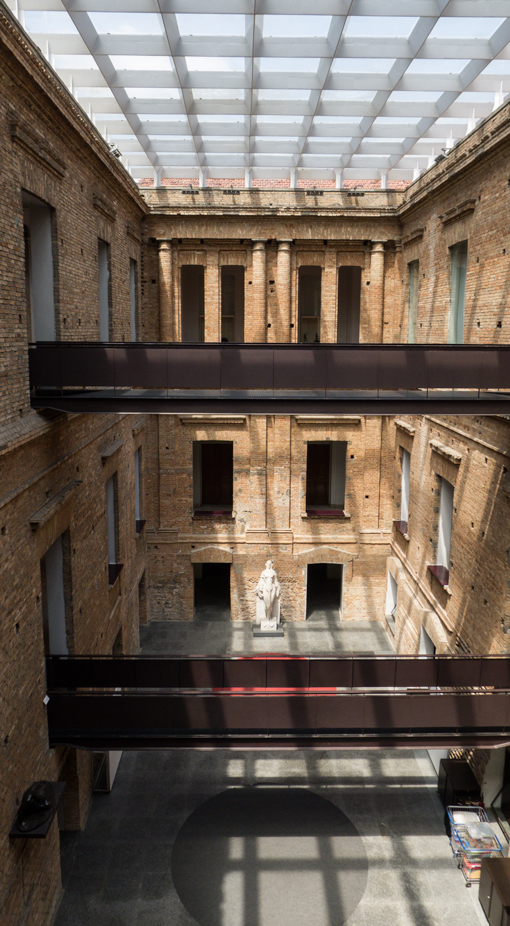While we were in Miami over Christmas, we went to the new Perez Art Museum Miami (PAMM). See earlier post here. The museum opened with a show of Ai Wei Wei’s (艾未未) work titled “According to What?”.

Ai Weiwei is one of the leading contemporary artist of his generation from China. First becoming famous for his work Fairytale in 2007 and then he collaborated with Herzog & de Muron on the design of the Beijing National Olympics Stadium in 2008.
China log 2005 (made with 8 pillars salvaged from Qing dynasty temples and assembled using traditional joinery techniques).

But after the Sichuan earthquake, he was determined to create artwork commenting on the value of life. He had been challenging the Chinese government and in 2011 he was detained for 81 days by the Chinese authorities on alleged charges of tax evasion.
Study of Perspective 
This is the first time I saw his work. While not overly commercial, his works feels opportunistic and somewhat unsurprising. His works have been understood to ask certain fundamental questions concerning the human conditions, cultural and social aspects.

According to the catalog, his works are created using a very simple form and systematic method similar to that of conceptual and minimal artists – Sol LeWitt and Donald Judd.
In Feb 2014, a man picked up one of his ceramic works (Colored Vases) in the museum and smashed it. The series consists of vases from the Han dynasty which had been dipped in industrial paint. Ai weiwei had photographed himself dropping one such Han dynasty vase, thereby destroying 2,000 years of cultural tradition as an act of conceptual art. See the NYTimes coverage here.
Moon chests – 2008
His Circle of Zodiac Animal Heads 2010 were also on display in the plaza.
 The statutes represent those that were installed at the Yuanming Yuan in the Old Summer Palace which was razed and looted by British and French soldiers in 1860.
The statutes represent those that were installed at the Yuanming Yuan in the Old Summer Palace which was razed and looted by British and French soldiers in 1860.

We have no idea what the originals looked like but these statutes are rather austere if not downright oppressive-looking.
It was a good show in a beautiful museum. This is a screen capture of a live web cam of the museum on Dec 31, 2013.
*

























































